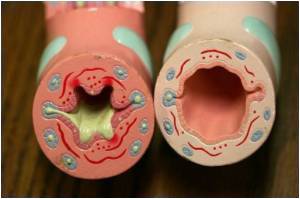Researchers used an alternative cell signaling pathway to significantly improve immune function in a 13-year-old boy with Wiskott-Aldrich syndrome, an inherited immune deficiency disorder.

"If this encouraging initial result holds up in further clinical studies, we may have a new treatment option for patients with Wiskott-Aldrich syndrome," said pediatric immunologist Jordan S. Orange, M.D., Ph.D., who holds the newly established Jeffrey Modell Endowed Chair in Pediatric Immunology Research at Children's Hospital.
The immunotherapy study appears in the April 2011 issue of The Journal of Clinical Investigation.
Wiskott-Aldrich syndrome (WAS) is a complex immunodeficiency disorder characterized by recurrent infections, eczema and thrombocytopenia (a low platelet count). Mutations in the WAS gene disable its ability to produce WAS protein (WASp), which crucially affects immune cells—particularly natural killer (NK) cells, a major component of the innate immune system. Without WASp, immune defenses are compromised, leaving WAS patients at risk for premature death from infection and cancers. This risk exists even for patients mildly affected by WAS.
The only current cure for WAS is stem cell transplantation, a potentially risky procedure presently justified in severe cases. In addition, Orange recently contributed to a small experimental study of gene therapy for WAS led by European researchers, which achieved clinical benefits in two severely affected young boys.
The current study represents a different approach from either stem cell transplantation or gene therapy. Instead of introducing normally functioning immune cells or inserting DNA to correct the defective gene, Orange and colleagues identified and made use of an alternative pathway to restoring immune function.
Advertisement
"IL-2 enables NK cells to become cytotoxic—to kill foreign cells," said Orange. "This happens even in the absence of WASp, the protein that is deficient in WAS patients." Researchers in Orange's laboratory found that in cell cultures, IL-2 induced the function of a protein called WAVE2, similar to WASp, but independent of it. The WAVE2 protein acted similarly to WASp, but was accessed through an alternative pathway that enables function in NK cells.
Advertisement
The researchers injected the patient with pharmaceutically produced IL-2 in three treatment courses over 27 weeks. At the end of treatment, the patient's NK cells had cytotoxicity nearly identical to that of a healthy control subject. He tolerated the IL-2 treatment well, with only minor skin reactions at the injection site.
"Although follow-up studies will be necessary to investigate long-range benefits and test IL-2 in additional patients, the initial results are encouraging," said Orange. "If cytokines can provide clinical benefits with low toxicity, this may represent an important advance and opportunity for all patients with Wiskott-Aldrich syndrome."
Source-Eurekalert









